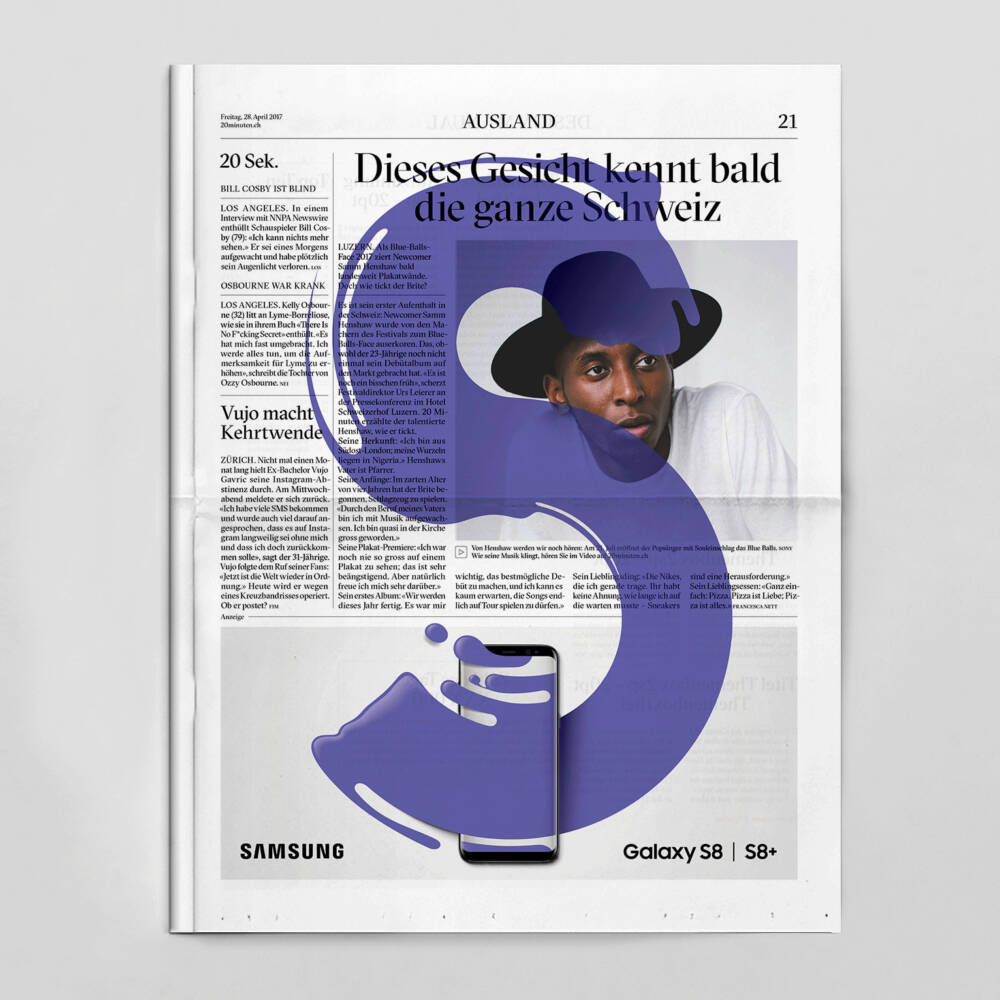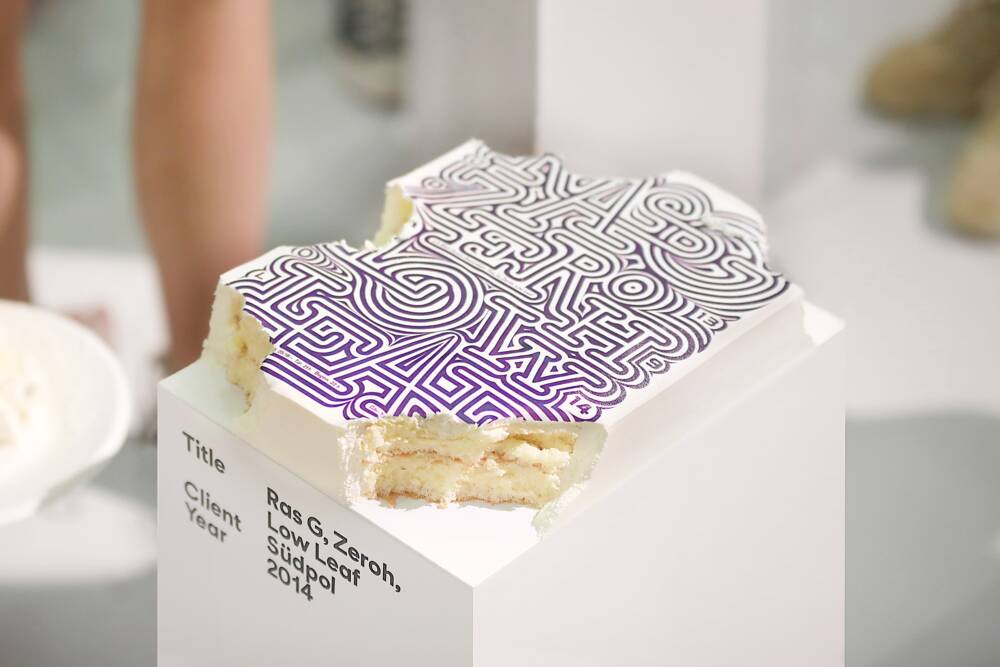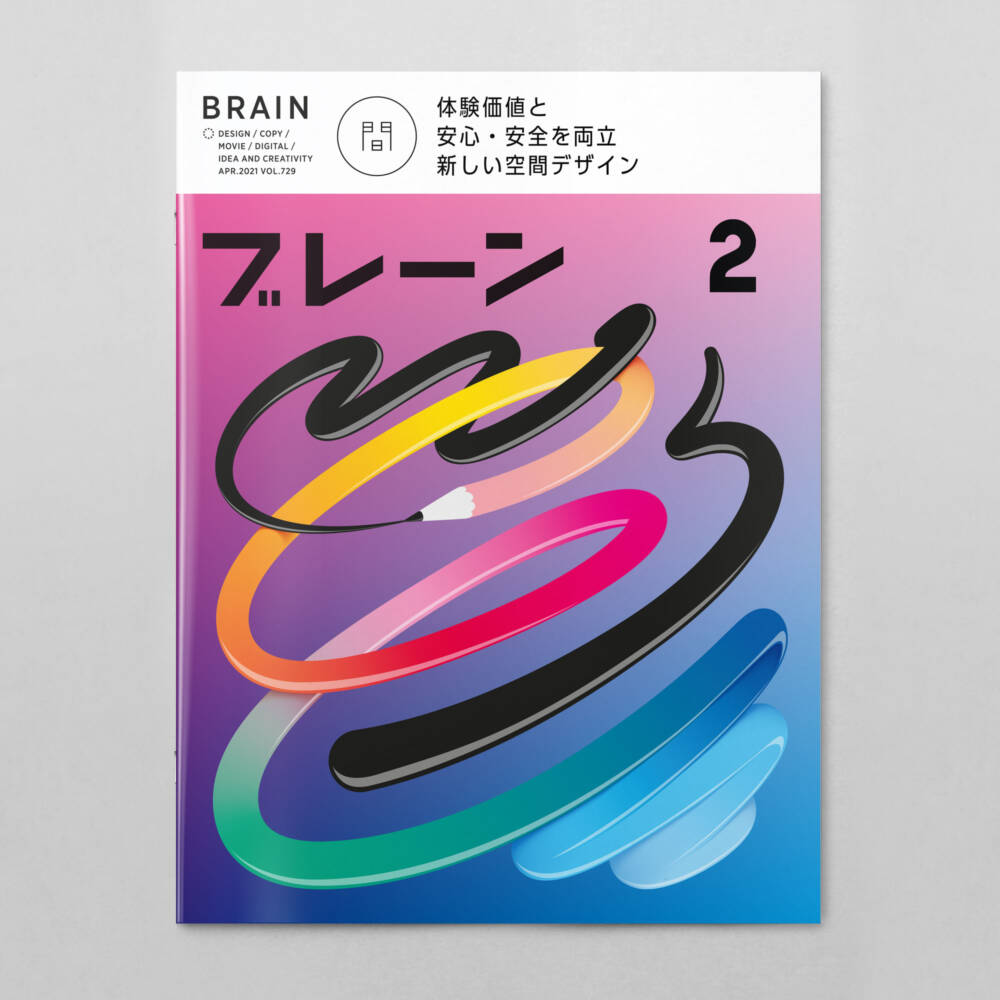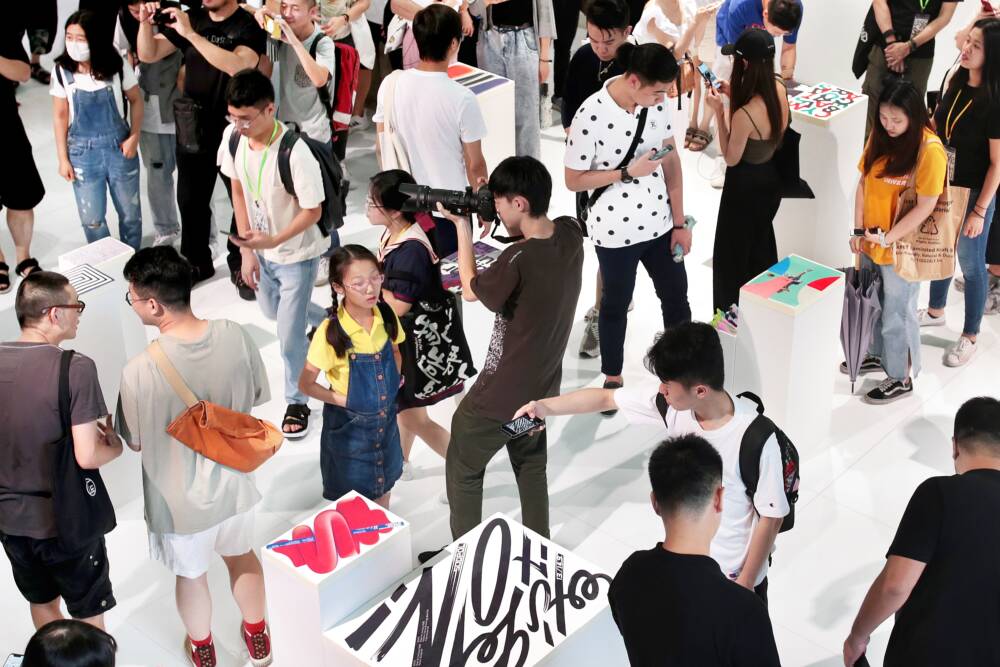Design Unleashed: Exploring the Creative Journey with Studio Feixen
With keen anticipation of their return to Berlin this September, we had the pleasure of sitting down with Felix Pfäffli, the creative force steering Studio Feixen, to explore his distinctive design philosophy and the ever-evolving journey of his studio.
At the 2019 edition of Forward Festival you showed us the responsive advertisement concept you created for multiple clients. Is there something you’re particularly anticipating when you join us this September in Berlin?
Of course. I’m looking forward to quite a few things. Mainly, it’s going to revolve around the unexpected twists of creative processes. But perhaps what I’m most excited about is presenting one of my latest works in Berlin. The Graphic Design Workflow, specifically. It’s a tool for graphic designers that provides a detailed description of how to conduct a graphic design project. I worked on this alongside Tobias Klauser, the head of the Graphic Design program, for over 4 years. This also ties into an industry-related thought. The creative industry is quite a tough business, and our idea behind this product was to offer a bit of security.

2009 you joined the Alliance Graphique Internationale (AGI), a prestigious “association of professionals, united by working in the field of graphic design and drawn from across the globe”. Could you tell us about the process of becoming a member and how / if it has impacted your career since?
That’s quite a complex process, actually. You can only become a member of AGI if you’re proposed by an active member. There’s no way to simply enroll. After that, members from your home country vote in an initial round to determine whether to recommend you or not. If you’re recommended, an international jury then decides whether or not to make you a member. Currently, AGI has around 510 members worldwide. I believe this small number and the gradual process reflect a lot about AGI’s expectations of its members. So, naturally, I was also incredibly excited to become one of its members.
It’s difficult to gauge the impact, of course. AGI brings with it a network that is truly unique due to its high quality. When you’re having a meal with AGI members, there’s an abundance of fascinating conversation. And if you have a specific question, you’ll definitely find someone with an answer. Additionally, membership is a bit like a quality label. It’s like being an apple with an organic sticker. And you do benefit from that, of course.
On the studio’s website, there’s a section where you describe your workflooow. It’s divided in two phases, the first one beginning with “knowing the rules.” So would you say you need to know the rules to break them? Is it necessary to go study design or do you think learning by doing is also an option?
I’m clearly more of an autodidact. I’ve taught myself numerous programming languages and skills and have developed my very own design theories. I think you can teach yourself anything. However, that’s somewhat of a simplistic view. I also teach graphic design myself. And if I didn’t believe that was important, I wouldn’t do this job. A solid education is important, but it’s also true that education alone won’t take you far. You have to bring a lot to the table yourself. You need to have a genuine interest in the subject matter. Nothing can happen without that. But you also need to seek help when needed and be open to it. A lot of people have played a role in my life. Without Erich Brechbühl, for example, I might not even have become a graphic designer, and I certainly wouldn’t be where I am today.

Step three of phase two is “prepare to fail”. How do you personally handle doubt and, worst case scenario, failure (phase two, step 4 B)?
Handling doubt and failure is actually quite simple. Failure is an integral part of my work. Creative work simply doesn’t function without failure. To me, these moments of failure are crucial. They’re the moments that push me forward and give me a new, clear direction. In reality, probably about 90% of my ideas fail. So, my approach is likely something like this: as soon as I fail, I try to look closely. I want to see and understand every detail of my failure. And then, armed with that new knowledge, I move forward.

How do you separate work from your private life? Do you “switch off” when the workday is over or do certain aspects of work linger on throughout your leisure time?
The question of separating work from my private life has always come up. In the past, I found this question irritating because so many people addressed it as if it were a problem if you can’t clearly separate the two. Honestly, I’ve never been able to do that. And now, I’ve actually moved towards the opposite. I try to integrate my work even more into my life. Anything else just doesn’t work for me.
I think it’s quite simple: if you turn something you love into your work, there’s no clear separation. I would have to dampen my interest for that. Furthermore, I chose this profession in order to spend as much time as possible on something that drives me and makes me happy. So, as soon as I start working, the opposite of what many understand as work-life balance happens. Depending on the situation, I might work until midnight. Hours often pass quickly because I get so engrossed in the subject matter that I forget everything around me. And sometimes, I’m in a really bad mood because of some minor design problem that won’t leave my mind, and I’m sure it wouldn’t matter to anyone else. Many might see that differently, but I don’t find anything negative about it.
What I had to learn more is to really understand my interest and give it the necessary space with all the consequences. Problems arise, for example, when I work until midnight and then don’t sleep in the next morning. Problems arise when I can’t distinguish between the part I enjoy and the part that feels like work. The second part has no place in my leisure time. However, the first part is present every second.

Have the past three years impacted your working habits? Do you work from home or regularly go to the studio space?
The past three years have not really influenced my working habits. I’ve always been able to determine how and when I work. After all, that’s what having your own studio means. What has influenced me the most is the size of the studio and the specific projects. Sometimes, the projects somewhat dictate how and where I need to work. Last year, I was in India to work on a chair, or in Poland to select colors for a mural. Just now, I spent two months on a creative sabbatical in the South of France to plan out the coming year. I love this variety. Sometimes, I work from home to be able to concentrate a hundred percent. But mostly, I’m at the studio. I need the exchange and the opinions of others. For me, work just isn’t as much fun without that.

How many people are part of the team at Studio Feixen?
Studio Feixen has always been evolving. I started as a solo individual in 2009. Around 2016, I started having employees. We were usually between 3 and 4 people for many years. All of them were great, very talented individuals. Raphael Leutenegger deserves special mention here; he’s been with us throughout this time. We moved several times, seeking out interesting spaces where we also organized exhibitions or concerts alongside our work. At some point, Raphael and I even opened a pizzeria right next to the studio. Through that, Raphael discovered his love for gastronomy and decided on a new path. That made it clear to me that I wanted to downsize Studio Feixen again. My goal was never to achieve a certain size. It was more about collaborations that were just fun because the people were so good. These days, I’m back to working alone at Studio Feixen, and I’m managing Studio Feixen Fonts together with Robin Eberwein.
Along your work at Studio Feixen you, Felix, also teach at Fachklasse Grafik Luzern. What made you decide to get into academia?
Teaching at Fachklasse Grafik Luzern wasn’t so much a decision. I was invited to teach there right after finishing my university studies. I also saw it as a kind of recognition of my work. It never crossed my mind to decline. I didn’t know the school that well, but I quickly realized how open and familial the atmosphere was. I felt at home within a short time.

Why did you decide to name your studio “Feixen”? What does it mean?
The name “Feixen” was actually something my friends started calling me around 2009. It was a nickname without a specific meaning. However, the word does come from Old German and means something like “gleeful laughter,” “grinning,” or even “foolish laughter like a jester.” I thought it suited my work, which might also irritate some people.
The medium you choose varies a lot: from type design, typography, animation and graphic design in the form of posters, covers, corporate designs or murals, you do it all. Is there something you enjoy doing most? One medium you feel you can express yourself best?
I guess it’s undoubtedly posters. I’ve engaged with them the most. However, I’m often more interested in exploring new fields than sticking with what I already know.

Earlier this year you created a mural which was based on sketches you created two years ago. Is it often the case that an idea slumbers in your mind and comes to life much later?
Yes, that happens occasionally. Sometimes ideas need years to develop. Additionally, many of my recent projects have dimensions that don’t allow them to be completed in less than a year anyway.
Could you tell us a bit about the process of creating your own font family?
Wow, yeah, that’s not easy at all. Overall, we work on an initial version of a typeface for about one to 1.5 years. It’s a very slow process. We start with a rough concept—often this arises from a personal desire. We ask ourselves, what would we like to use ourselves? What’s missing right now? This leads to the next challenge: When you’re designing something that doesn’t exist yet, there are often significant technical hurdles. In the next step, we try to overcome these challenges. If that works out and it looks good, then we enter a lengthy phase of comparison until we find the final form. It’s a very meditative process, involving placing millimeter-sized differences side by side until we find nothing else to change.
How do you see augmented reality and virtual reality impact the future of design?
Quite simply, in the future, both technologies will be part of everyday life. They will feel as normal as flipping through a book feels now.
Image credits: © Studio Feixen
Interview Questions: Vivianne Pärli